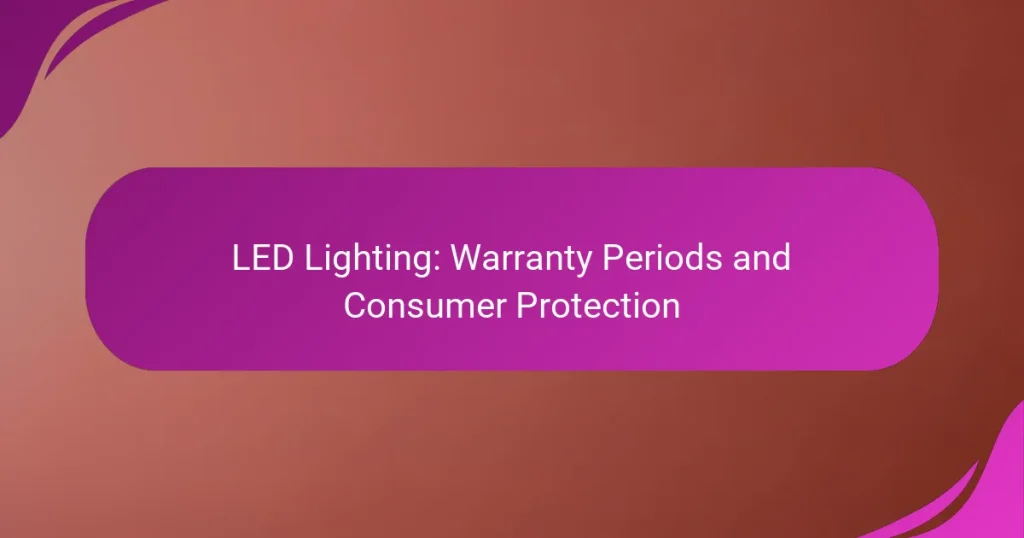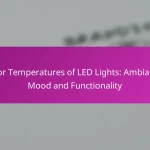When purchasing LED lighting in the UK, consumers can expect warranty periods that typically range from two to five years, varying by manufacturer and product type. Understanding the details of these warranties, along with consumer protection laws, is essential for safeguarding against faulty products and ensuring informed purchasing decisions.
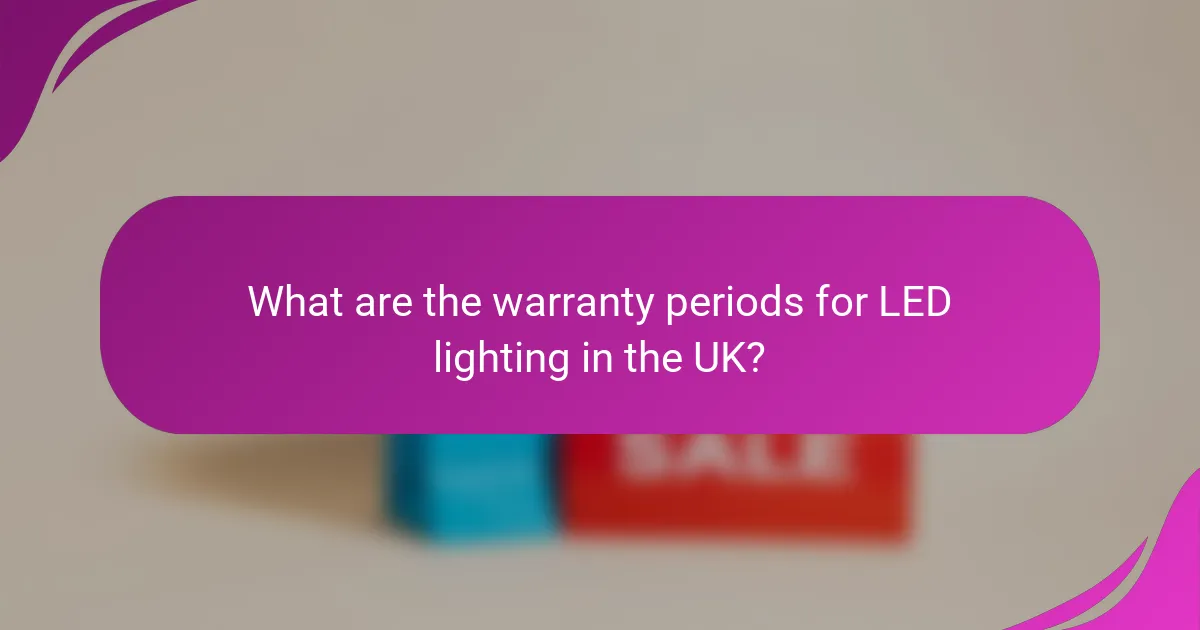
What are the warranty periods for LED lighting in the UK?
In the UK, warranty periods for LED lighting typically range from two to five years, depending on the manufacturer and product type. Consumers should carefully review warranty details to understand coverage and any specific conditions that apply.
Typical warranty duration
Most LED lighting products come with a warranty period of around three years. However, some high-quality brands may offer warranties extending up to five years, reflecting their confidence in product durability. It’s advisable to check the warranty duration before making a purchase, as this can vary significantly between different manufacturers.
Manufacturer-specific warranties
Different manufacturers have varying warranty policies for their LED lighting products. Some may provide a standard warranty, while others might offer extended warranties for specific product lines. Always review the warranty terms provided by the manufacturer, as they outline what is covered and the process for claims.
Common warranty exclusions
Warranty exclusions for LED lighting often include damage caused by improper installation, misuse, or exposure to extreme conditions. Additionally, normal wear and tear or cosmetic damages may not be covered. Consumers should read the warranty documentation carefully to understand these exclusions and avoid potential pitfalls when seeking repairs or replacements.
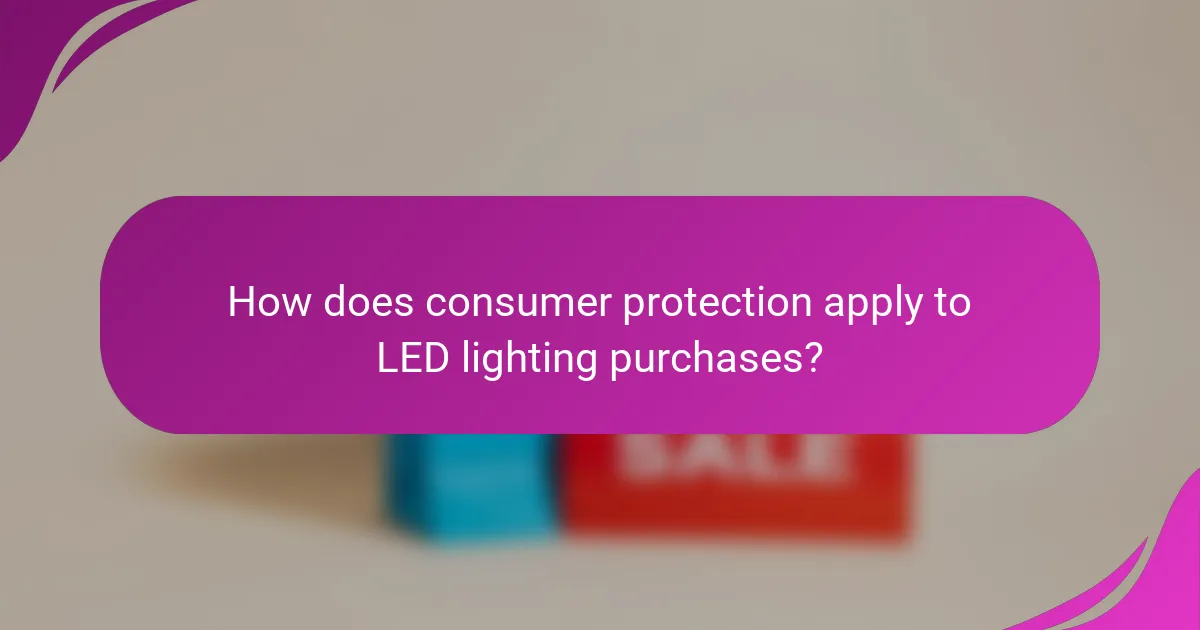
How does consumer protection apply to LED lighting purchases?
Consumer protection laws ensure that buyers of LED lighting products are safeguarded against faulty items and misleading claims. These laws provide rights regarding warranties, returns, and refunds, helping consumers make informed decisions and seek recourse when necessary.
Consumer Rights Act 2015
The Consumer Rights Act 2015 establishes key protections for consumers in the UK, including those purchasing LED lighting. Under this act, products must be of satisfactory quality, fit for purpose, and as described. If an LED light fails to meet these criteria, consumers have the right to a repair, replacement, or refund.
For LED lighting, this means that if a product is defective or does not perform as advertised, consumers can take action within a reasonable timeframe, typically up to 30 days for a full refund. After this period, rights may still apply, but the process may differ.
Return policies for faulty products
Return policies for faulty LED lighting products vary by retailer but generally align with consumer protection laws. Most retailers offer a return window, often between 14 to 30 days, during which consumers can return defective items for a full refund or exchange. It’s essential to keep the original packaging and receipt to facilitate the return process.
When returning faulty LED lighting, consumers should check the specific return policy of the retailer, as some may require the product to be unused or in its original condition. Understanding these policies can help avoid pitfalls and ensure a smoother return experience.
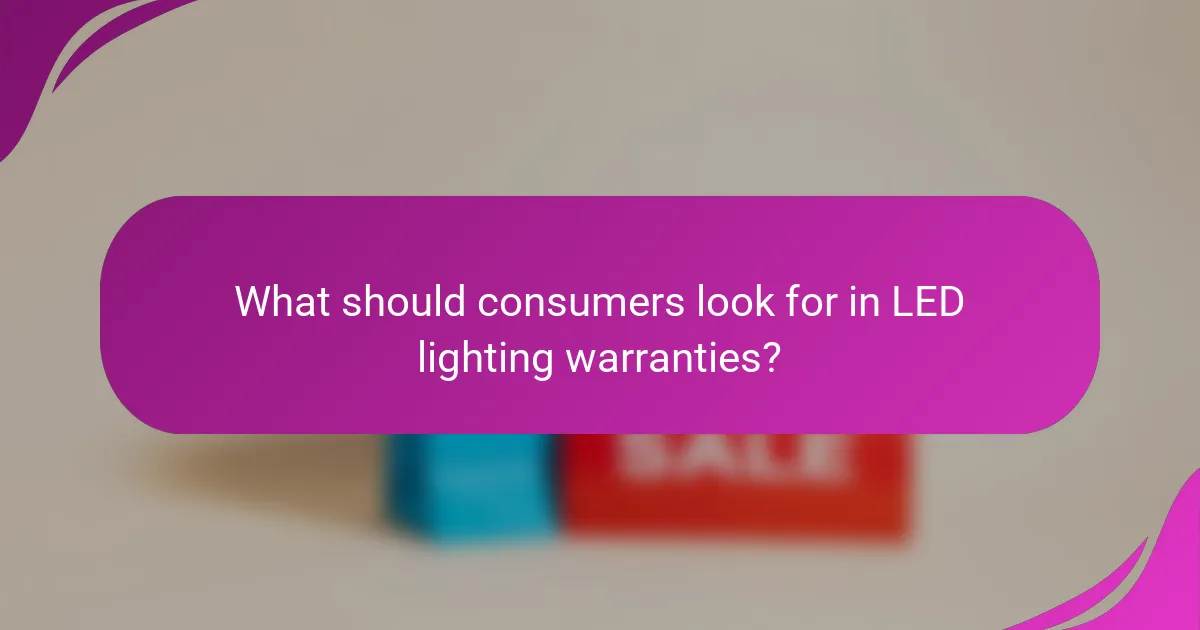
What should consumers look for in LED lighting warranties?
Consumers should prioritize warranties that clearly outline coverage, the claim process, and the manufacturer’s reputation. A strong warranty not only protects your investment but also reflects the quality and reliability of the LED lighting product.
Coverage details
When reviewing LED lighting warranties, examine what is covered and for how long. Look for warranties that cover defects in materials and workmanship, typically ranging from 2 to 5 years. Some manufacturers may offer extended warranties for higher-end products, which can be a sign of confidence in their durability.
Additionally, check if the warranty includes coverage for light output degradation. Many LED products will specify a certain lumen maintenance percentage over time, which indicates how much brightness you can expect after several years of use.
Claim process
The claim process should be straightforward and clearly outlined in the warranty documentation. Look for warranties that provide a simple step-by-step guide on how to file a claim, including any necessary documentation such as proof of purchase and photos of the defective product.
Be aware of any time limits for filing claims, as some warranties require you to report issues within a specific period after noticing them. Understanding the claim process in advance can save you time and frustration if you need to utilize the warranty.
Manufacturer reputation
Researching the manufacturer’s reputation is crucial when considering LED lighting warranties. A company with a solid track record of customer service and product reliability is more likely to honor their warranty commitments. Look for reviews and ratings from other consumers to gauge their experiences.
Additionally, consider manufacturers that are well-established in the industry and have a history of producing quality products. A reputable manufacturer is more likely to provide support and stand behind their warranty, ensuring you feel secure in your purchase.
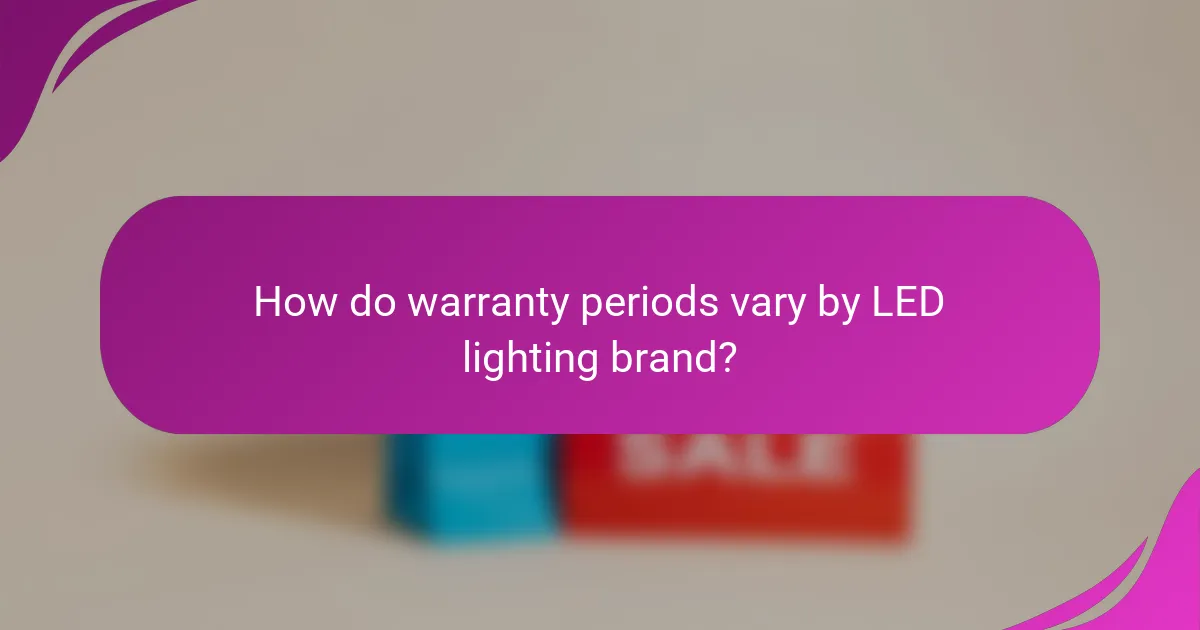
How do warranty periods vary by LED lighting brand?
Warranty periods for LED lighting brands can differ significantly, often ranging from one to five years. Factors influencing these variations include brand reputation, product type, and specific model features.
Philips warranty options
Philips typically offers warranties ranging from two to five years, depending on the product line. Their premium LED products often come with longer warranties, reflecting their commitment to quality and durability.
Consumers should check the specific warranty terms for each Philips product, as conditions may vary. It’s advisable to retain the purchase receipt and register the product online to ensure warranty coverage.
Sylvania warranty details
Sylvania generally provides a warranty period of three years for most of their LED lighting products. This warranty covers defects in materials and workmanship, ensuring that customers receive a reliable product.
To make a warranty claim, customers must provide proof of purchase and follow Sylvania’s claim process, which can typically be found on their website. Understanding the warranty specifics can help avoid common pitfalls during the claim process.
Osram warranty comparisons
Osram offers warranties that usually range from two to five years, similar to Philips. Their warranty terms often reflect the intended use of the product, with commercial-grade LEDs typically having longer coverage.
Consumers should be aware that Osram may require registration of the product for warranty validation. Reviewing the warranty details before purchase can help ensure that the chosen product meets your needs for reliability and support.
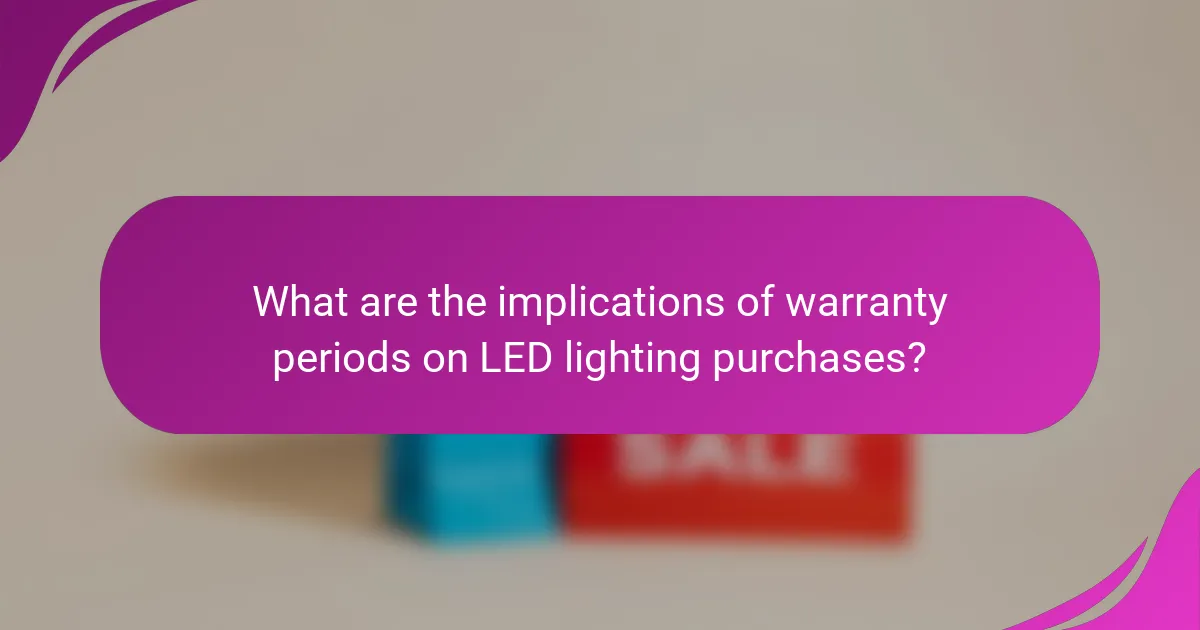
What are the implications of warranty periods on LED lighting purchases?
Warranty periods for LED lighting can significantly influence consumer choices and expectations. A longer warranty often indicates higher product quality and reliability, while shorter warranties may suggest potential issues or lower confidence from the manufacturer.
Impact on purchase decisions
When considering LED lighting, the warranty period can heavily sway purchase decisions. Consumers often view longer warranties as a sign of trust from the manufacturer, which can lead to a preference for brands that offer extended coverage. For instance, a product with a five-year warranty may be more appealing than one with only a one-year warranty, even if both are similarly priced.
Additionally, warranty terms can vary widely among brands. Some may cover only defects in materials, while others include performance guarantees, which can affect consumer confidence in their purchase. Always read the fine print to understand what is covered and for how long.
Long-term cost considerations
Warranty periods can also impact the long-term costs associated with LED lighting. A product with a longer warranty may save consumers money in the long run, as it reduces the likelihood of needing replacements or repairs. For example, if an LED bulb fails after one year but is replaced under warranty, the consumer avoids additional costs.
Moreover, consider the potential energy savings from high-quality LED lights. While the initial investment may be higher for products with longer warranties, the durability and efficiency can lead to lower electricity bills and reduced replacement frequency, making them more cost-effective over time.
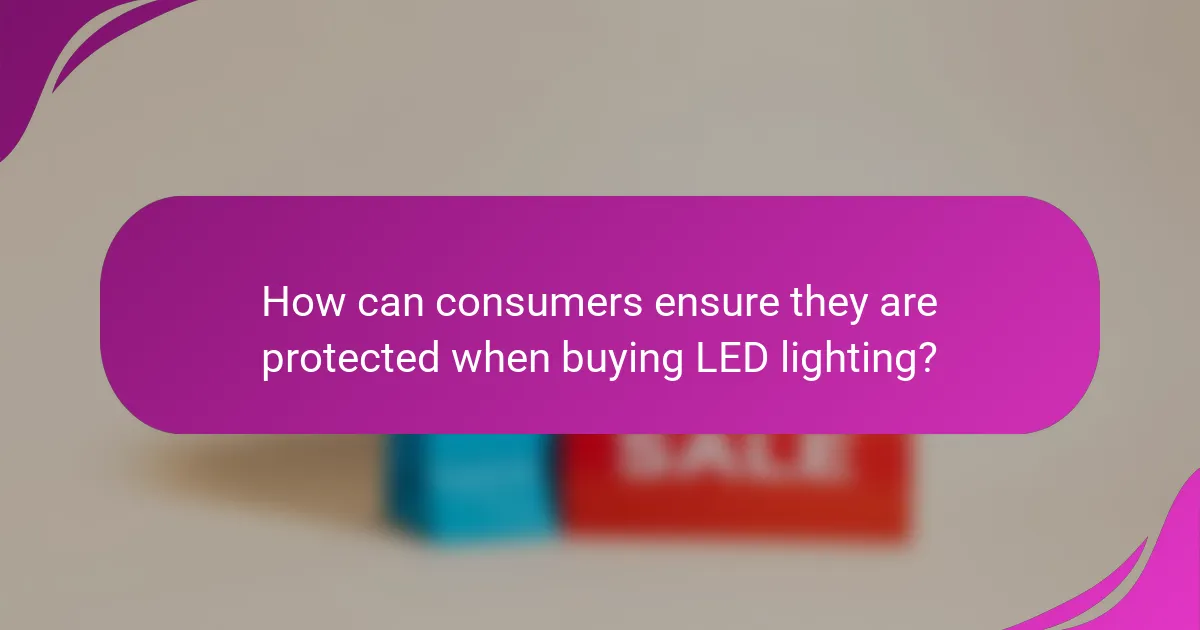
How can consumers ensure they are protected when buying LED lighting?
Consumers can protect themselves when purchasing LED lighting by conducting thorough research, understanding warranty terms, and being aware of their rights. These steps help ensure that they choose reliable products and are covered in case of defects or performance issues.
Researching brands
Before buying LED lighting, it’s essential to research different brands to identify those with a solid reputation. Look for manufacturers known for quality and customer service, as well as those that comply with relevant safety standards.
Check online reviews and ratings from other consumers to gauge product performance and reliability. Consider brands that have been in the market for several years, as they are more likely to offer dependable products and support.
Understanding warranty terms
Understanding warranty terms is crucial for consumer protection when buying LED lighting. Warranties typically cover defects in materials and workmanship for a specified period, often ranging from one to five years.
Read the warranty details carefully to know what is covered and any conditions that may void it. Some warranties may require proof of purchase or specific installation methods, so keep all documentation handy to ensure you can claim support if needed.
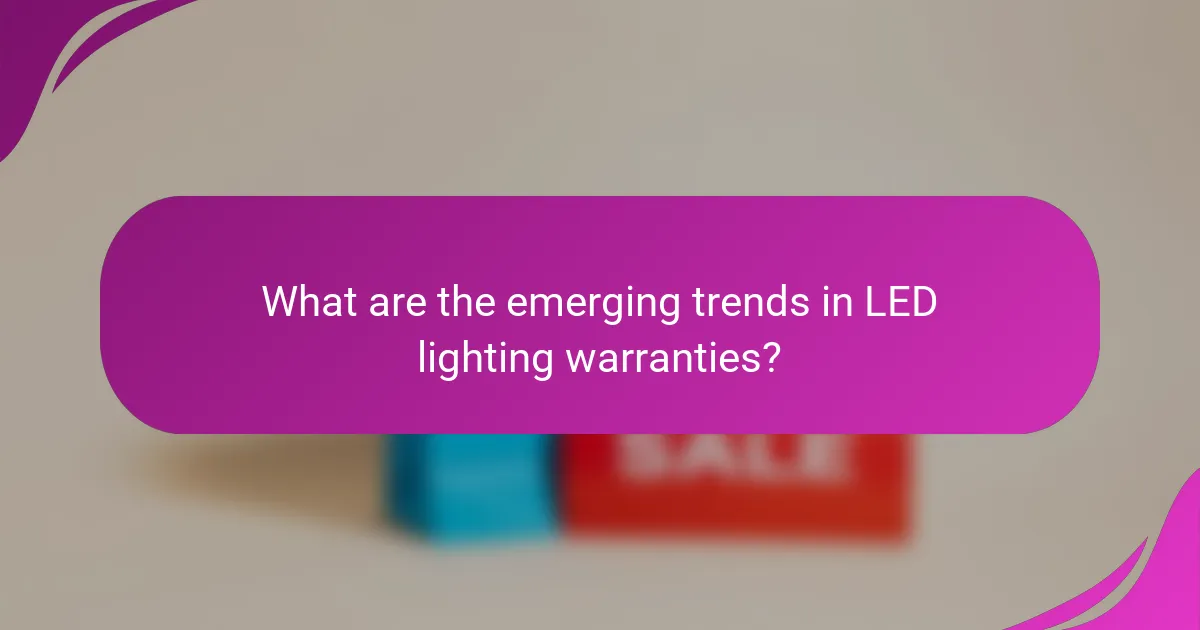
What are the emerging trends in LED lighting warranties?
Emerging trends in LED lighting warranties include longer coverage periods, enhanced consumer protection, and the introduction of more flexible warranty options. Manufacturers are increasingly offering warranties that extend beyond the traditional ranges, reflecting the growing confidence in LED technology and its durability.
Extended warranty options
Extended warranty options provide consumers with additional coverage beyond the standard warranty period, which typically lasts from two to five years. These options can vary significantly in terms of duration and terms, often extending coverage to as much as ten years or more, depending on the manufacturer.
When considering an extended warranty, evaluate the cost versus potential benefits. Some warranties may cover defects and performance issues, while others might include additional services like installation or replacement. Always read the fine print to understand what is included and any exclusions that may apply.
For example, a manufacturer might offer a five-year standard warranty and an option to extend it for an additional three years for a nominal fee. This can be a worthwhile investment if the LED lighting system is used in a high-traffic area or a commercial setting where reliability is crucial.
